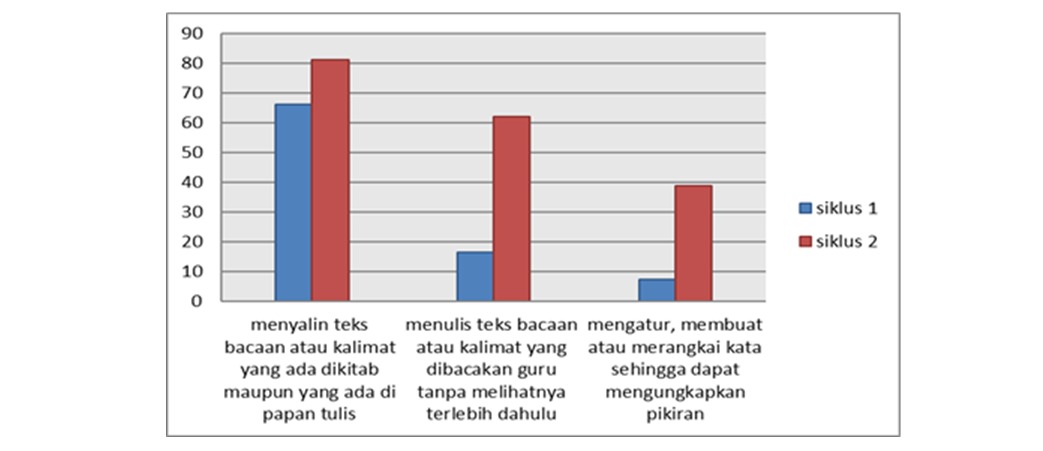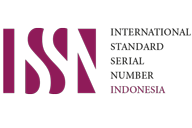Enhancing Arabic Writing Skills Through Realistic Images at MI Hiyatul Ilmi
DOI:
https://doi.org/10.69526/bir.v3i3.366Keywords:
Writing Skill, Arabic Language, Reality Based MediaAbstract
This study was motivated by the low Arabic writing proficiency among students at Madrasah Ibtidaiyah. Observations during the teaching and learning process revealed that the teacher relied solely on student worksheets (LKS) without incorporating appropriate instructional media. This lack of media use was considered a contributing factor to students’ limited writing skills. The objectives of this study are twofold: first, to analyze the effectiveness of reality-based learning media in assessing students’ Arabic writing skills; and second, to observe improvements in these skills following the implementation of reality image media in Arabic language instruction. This research employed Classroom Action Research (CAR) as the methodological approach. The study involved 22 students, comprising 14 boys and 8 girls. The research was conducted over two cycles, each involving planning, action, observation, and reflection stages. The findings indicate that the use of reality image media significantly enhanced students’ Arabic writing skills. In the first cycle, the writing performance reached only 31.8%. However, after refining the approach in the second cycle, the achievement rose to 86.3%. The students’ average score on the Arabic writing test reached 88.6, which exceeds the Minimum Mastery Criterion (KKM) set at 75. These results suggest that reality-based media can serve as an effective tool to support the development of Arabic writing proficiency at the elementary school level.
References
A. Rathomi, Maharah Kitabah Dalam Pembelajaran Bahasa Arab, 1st ed., vol. 1, 1 vols. Jurnal Keguruan dan Pendidikan Islam, 2020.
A. Muradi, Pembelajaran Menulis Bahasa Arab. Jakarta: Dajar Interparatama Mandiri, 2015.
A. Wahab Rosyid, “Memahami Konsep Dasar Pembelajaran Bahasa Arab,” UIN Maliki Press, p. 97, 2011.
A. Muradi, Pembelajaran Menulis Bahasa Arab‖. Jakarta: Dajar Interpratama, 2015.
B. Mustofa and A. Khamid, Metode & Strategi Pembelajaran Bahasa Arab. Malang: UIN Maliki, 2011.
A. Arsyad, Media Pembelajaran. Rajagrafindo, 2014.
S. Ismail and Etc, “Analisis Kebijakan Penguatan Pendidikan Karakter Dalam Mewujudkan Pelajar Pancasila di Sekolah.,” J. Manaj. Pendidik. Dan Ilmu Sosia, vol. 2, no. 1, pp. 76–84.
K. Cherry, Piaget’s 4 Stages of Cognitive Development Explained. 2023. [Online]. Available: https://www.verywellmind.com/piagets-stages-of-cognitive-development-2795457
G. Engineering, Edgar Dale’s Cone of Experience: A Comprehensive Guide. 2023. [Online]. Available: https://www.growthengineering.co.uk/what-is-edgar-dales-cone-of-experience/
M. Japar, Media dan Teknologi Pembelajaran PPKN. Surabaya: Jakad Publishing, 2019.
A. S. Darmawan, Media Pendidikan. Jakarta: Rajagrafindo Persada, 2005.
R. E Salvin, Psikologi Pendidikan Teori dan Praktik. Jakarta, 2011.
Z. A. Halim, M. S. Nasir, M. F. Yahaya, W. A. H. W. Omar, and N. S. Ismail, “Improving Arabic writing skills for secondary school students through Jawlah Lughawiyyah activity,” Man India, vol. 97, no. 16, pp. 323–330, 2017, [Online]. Available: https://www.scopus.com/inward/record.uri?eid=2-s2.0-85031297600&partnerID=40&md5=18b86f6e5a177553a4acab5cc45a6a99
M. D. Aldhafiri and S. Alshaye, “Effect of Using a Flipped Classroom Instructional Model on Arabic Writing Skills among Female Students at Kuwait University,” Int. J. Pedagog. Curric., vol. 28, no. 2, pp. 117–136, 2021, doi: https://doi.org/10.18848/2327-7963/CGP/v28i02/117-136.
S. Wang and S. N. Kew, “A Review on the Impact of a Blended Process-oriented Approach on the English Writing Skills,” World J. English Lang., vol. 15, no. 3, pp. 251–259, 2025, doi: https://doi.org/10.5430/wjel.v15n3p251.
F. Weber, T. Wambsganss, and M. Söllner, “Enhancing legal writing skills: The impact of formative feedback in a hybrid intelligence learning environment,” Br. J. Educ. Technol., vol. 56, no. 2, pp. 650–677, 2025, doi: https://doi.org/10.1111/bjet.13529.
C. Alfonso, “Quantitative and qualitative methods, and primary methods,” in Environmental Toxicology: Non-bacterial Toxins, Laboratorio CIFGA S.A., Avenida Benigno Rivera, 56, Lugo, 27003, Spain: De Gruyter, 2024, pp. 65–101. doi: https://doi.org/10.1515/9783111014449-003.
E. Carvalho, “Qualitative methods of data generation and analysis,” in Research Methods in Human Rights: A Handbook, Second Edition, University of Dundee, Dundee, United Kingdom: Edward Elgar Publishing Ltd., 2024, pp. 153–179. doi: https://doi.org/10.4337/9781803922614.00020.
R. D. M. Pelly, “Qualitative methods - understanding the ‘why’ and ‘how’ of entrepreneurship: A review of ‘In search of creative qualitative methods to capture current entrepreneurship research challenges,’” in Big Questions and Great Answers in Entrepreneurship Research: Discussing Up-to-date Methodological and Philosophical Issues, Department of Business, Fisk University, United States: Edward Elgar Publishing Ltd., 2024, pp. 160–162. doi: https://doi.org/10.4337/9781800888661.00015.
H. Grace, K. Banson, and A. Saraf, “Qualitative methods and mixed-methods: design, measures, and classic examples,” in Translational Radiation Oncology, New York Medical College, Valhalla, NY, United States: Elsevier, 2023, pp. 291–294. doi: https://doi.org/10.1016/B978-0-323-88423-5.00064-9.
M. Boumezrag, “Qualitative methods and mixed methods,” in Translational Interventional Radiology, Medstar Georgetown University Hospital, Washington, DC, United States: Elsevier, 2023, pp. 233–234. doi: https://doi.org/10.1016/B978-0-12-823026-8.15001-1.
M. H. Açikgöz, E. Özer, and K. Öğülmüş, “Improving story writing skills of students with intellectual disabilities: POW+C-SPACE,” Int. J. Dev. Disabil., 2025, doi: https://doi.org/10.1080/20473869.2025.2456980.
S. Rexhepi and Ç. Suka, “The Criteria and Challenges in Evaluating the Performance of the Writing Skills of German Language Students,” J. Lang. Teach. Res., vol. 16, no. 1, pp. 13–22, 2025, doi: https://doi.org/10.17507/jltr.1601.02.
P. R. Alapati et al., “Improving English Writing Skills Through NLP-Driven Error Detection and Correction Systems,” Int. J. Adv. Comput. Sci. Appl., vol. 16, no. 2, pp. 1098–1110, 2025, doi: https://doi.org/10.14569/IJACSA.2025.01602109.
M. Bal and E. Öztürk, “The potential of deep learning in improving K-12 students’ writing skills: A systematic review,” Br. Educ. Res. J., 2025, doi: 10.1002/berj.4120.
M. Qiao, “Using deep learning to improve English writing skills,” J. Comput. Methods Sci. Eng., 2025, doi: 10.1177/14727978251321403.
S. M. Shinde and M. B. Shinde, “ENHANCING WRITING SKILLS OF ESP LEARNERS THROUGH BLOGGING: INSIGHTS FROM ENGINEERING STUDENTS,” J. Teach. English Specif. Acad. Purp., vol. 12, no. 3, pp. 783–791, 2025, doi: https://doi.org/10.22190/JTESAP241016058S.
G. Rahmanova, G. Y. Ekşi, S. Shahabitdinova, G. Nasirova, B. Sotvoldiyev, and S. Miralimova, “Enhancing Writing Skills with Social Media-Based Corrective Feedback,” World J. English Lang., vol. 15, no. 1, pp. 252–264, 2025, doi: https://doi.org/10.5430/wjel.v15n1p252.
M. Nicol and B. C. Pletcher, “Teaching Writing Skills Alongside the Writing Process: Interactive Writing in the Prekindergarten Classroom,” Read. Teach., 2025, doi: https://doi.org/10.1002/trtr.70010.
R. Z. Alghamdy and A. M. Alghamdi, “The Impact of Google Classroom on Students’ Writing Skills in Arabic and English Classrooms: A Comparison Study,” Theory Pract. Lang. Stud., vol. 15, no. 1, pp. 45–54, 2025, doi: https://doi.org/10.17507/tpls.1501.06.
T. Clark and G. Yu, “Test preparation pedagogy for international study: Relating teacher cognition, instructional models and academic writing skills,” Lang. Teach. Res., vol. 29, no. 2, pp. 726–750, 2025, doi: https://doi.org/10.1177/13621688211072381.
A. J. Ahmad Tajuddin et al., “Enhancing Islamic Millennial Students’ Writing Skills through Facebook Class,” Nazhruna J. Pendidik. Islam, vol. 8, no. 1, pp. 92–106, 2025, doi: https://doi.org/10.31538/nzh.v8i1.109.
D. Khampusaen, “The Impact of ChatGPT on Academic Writing Skills and Knowledge: An Investigation of Its Use in Argumentative Essays,” Learn J. Lang. Educ. Acquis. Res. Netw., vol. 18, no. 1, pp. 963–988, 2025, doi: https://doi.org/10.70730/PGCQ9242.
A. Bodaubekov, S. Agaidarova, T. Zhussipbek, D. Gaipov, and N. Balta, “Leveraging AI to enhance writing skills of senior TFL students in Kazakhstan: A case study using ‘Write & Improve,’” Contemp. Educ. Technol., vol. 17, no. 1, 2025, doi: https://doi.org/10.30935/cedtech/15687.
A. I. Alhammad, “Implementing a Genre-Based Approach to Enhance Essay Writing Skills in Saudi EFL Learners,” J. Lang. Teach. Res., vol. 16, no. 1, pp. 295–301, 2025, doi: https://doi.org/10.17507/jltr.1601.31.
C. Chao, N. A. Abdul Rahman, and G. Y. Soon, “A Review on Project Based Learning in Enhancing English Writing Skills,” Forum Linguist. Stud., vol. 7, no. 1, pp. 913–926, 2025, doi: https://doi.org/10.30564/fls.v7i1.8106.
M. F. Bafadal and H. Ismail, “Enhancing Students’ Writing Skills through Project-Based Learning with Digital Media Integration: An Experimental Study,” Forum Linguist. Stud., vol. 6, no. 6, pp. 211–221, 2024, doi: https://doi.org/10.30564/fls.v6i6.7803.
F. Cardoso, “Enhancing Scientific Writing Skills,” Mov. Disord. Clin. Pract., vol. 11, no. S3, pp. S39–S41, 2024, doi: https://doi.org/10.1002/mdc3.14086.
A. Asnawiyah, A. Wahid, N. Amri, and M. H. Husni, “PREVENTION OF INFERIORITY COMPLEX ATTITUDES ACCORDING TO THE QUR’AN,” QiST J. Quran Tafseer Stud., vol. 3, no. 2, pp. 234–280, Aug. 2024, doi: https://doi.org/10.23917/qist.v3i2.8413.
A. Nirwana, A. Fitri, R. Rahmadon, F. Arfan, Z. Zahari, and F. M. Sari, “Sosialisasi Kemukjizatan Al Qur’an Terhadap Komunitas Pendengar Radio Baiturrahman Aceh Melalui Program Interaktif Al Qur’an dan Sains,” PERDIKAN (Journal Community Engag., vol. 1, no. 2, Dec. 2019, doi: https://doi.org/10.19105/pjce.v1i2.2863.
S. Akhyar, S. Suri, Irwanto, and A. N. An, “Proselytism without Coercion and without Discrimination against non-Muslims in the Study of Quranic Proselytism Exegesis,” Budapest Int. Res. Critics Linguist. Educ. J., vol. 4, no. 4, pp. 11181–11191, 2021.
A. Basir, S. Suri, A. Nirwana AN, R. Sholihin, and H. Hayati, “relevance of national education goals to the guidance of the Al-Quran and Al-Hadith,” Linguist. Cult. Rev., vol. 6, pp. 122–137, Jan. 2022, doi: https://doi.org/10.21744/lingcure.v6nS5.2088.
A. Nirwana AN et al., “Serving to parents perspective azhar’s quranic interpretation,” Linguist. Cult. Rev., vol. 6, pp. 254–263, Feb. 2022, doi: https://doi.org/10.21744/lingcure.v6nS5.2155.
S. Suri and A. Nirwana AN, “Konstruksi Metode Tafsir Ijmali: Kajian Terhadap Kitab At-Tafsir Al-Muyassar Karya ‘Aidh Al-Qarni,” AL QUDS J. Stud. Alquran dan Hadis, vol. 6, no. 3, Dec. 2022, doi: https://doi.org/10.29240/alquds.v6i3.4313.
A. N. An, F. Arfan, F. D. Marshal, C. Maulana, and N. Fadli, “Metodologi Tafsir Al-Qur’an : Methods of Qur’an Research and Quran Tafseer Research its implications for contemporary Islamic thought,” Bull. Islam. Res., vol. 2, no. 1, pp. 33–42, 2024, doi: https://doi.org/10.69526/bir.v2i3.34.
U. Abdurrahman, A. N. An, A. Rhain, A. Azizah, Y. Dahliana, and A. Nurrohim, “AL-AFKAR: Journal for Islamic Studies Perdebatan Kategori Ayat Dakwah Qs. Ali Imran Ayat 64 Antara Buya Hamka Dan Mufassir Nusantara,” al-Afkar J. Islam. Stud, vol. 7, no. 1, pp. 189–206, 2024.
E. B. Wiranto, M. Ali, N. Achmad, D. Ramdhani, and A. A. N. Nirwana, “ISLAMOPHOBIA AND COMMUNISM: PERPETUAL PREJUDICE IN CONTEMPORARY INDONESIA,” Rev. Gest. Soc. e Ambient., vol. 18, no. 2, 2024, doi: https://doi.org/10.24857/RGSA.V18N2-075.
A. Akram, S. Suri, W. Faaqih, and A. N. AN, “Damage on Earth in the Qur’an: A Study of Thematic Interpretations in Anwar Al Tanzil’s Interpretation by Al Baidhawi,” al-Afkar, J. Islam. Stud., vol. 7, no. 2, pp. 644–658, 2024.
A. A. Astuti, S. A. Aryani, S. Hidayat, . W., A. N, Andri Nirwana, and . M., “Parent Practices of SMPIT Insan Mulia Surakarta in Implementing Sexual Education from An Islamic Perspective to Children in The Digital Era,” Int. J. Relig., vol. 5, no. 10, pp. 2092–2109, Jun. 2024, doi: https://doi.org/10.61707/6msvvh24.

Downloads
Published
Issue
Section
License
Copyright (c) 2025 Aulia Zachra Lestar, Siskha Putri Sayekti (Author)

This work is licensed under a Creative Commons Attribution 4.0 International License.



















